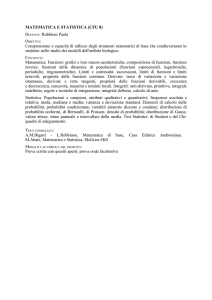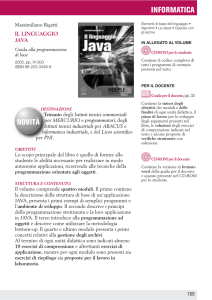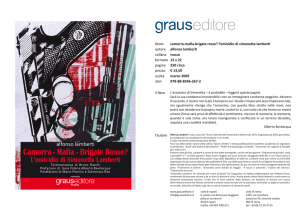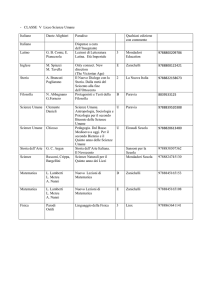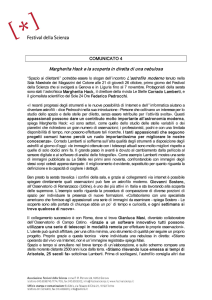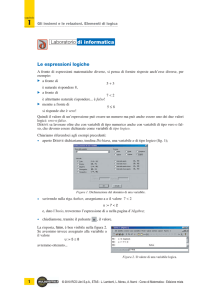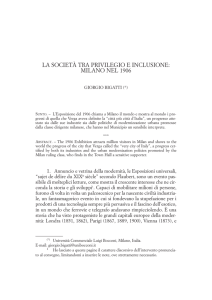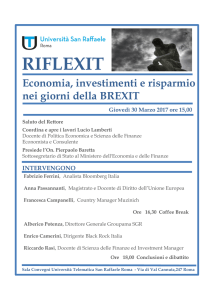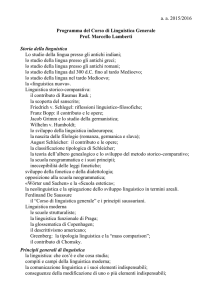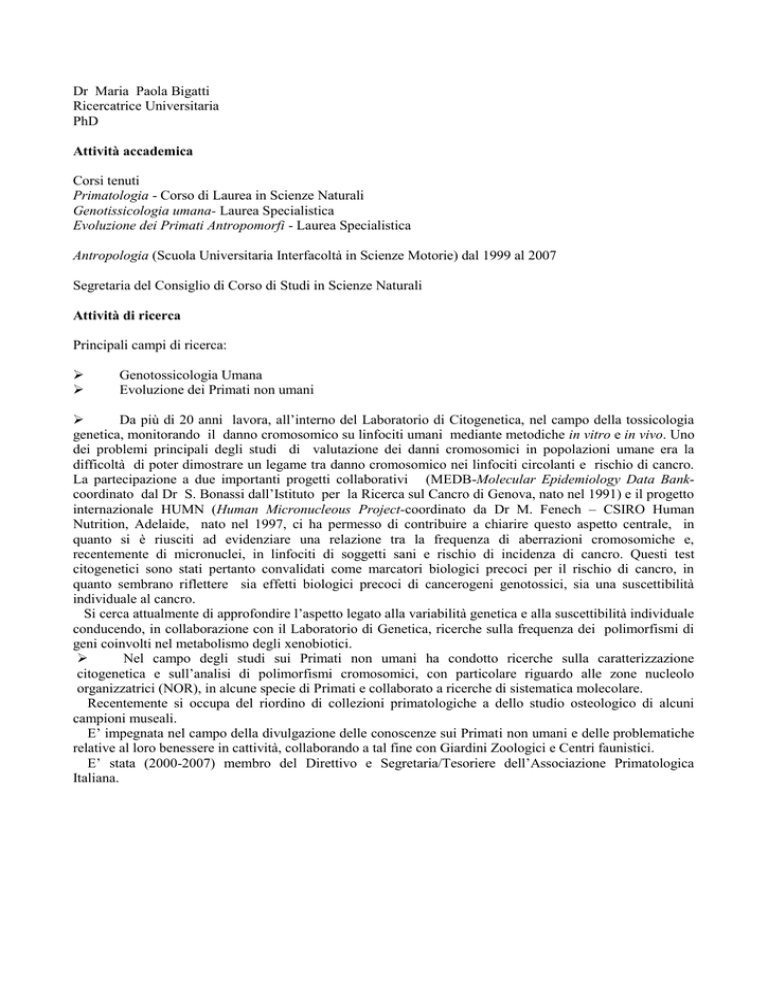
Dr Maria Paola Bigatti
Ricercatrice Universitaria
PhD
Attività accademica
Corsi tenuti
Primatologia - Corso di Laurea in Scienze Naturali
Genotissicologia umana- Laurea Specialistica
Evoluzione dei Primati Antropomorfi - Laurea Specialistica
Antropologia (Scuola Universitaria Interfacoltà in Scienze Motorie) dal 1999 al 2007
Segretaria del Consiglio di Corso di Studi in Scienze Naturali
Attività di ricerca
Principali campi di ricerca:
Genotossicologia Umana
Evoluzione dei Primati non umani
Da più di 20 anni lavora, all’interno del Laboratorio di Citogenetica, nel campo della tossicologia
genetica, monitorando il danno cromosomico su linfociti umani mediante metodiche in vitro e in vivo. Uno
dei problemi principali degli studi di valutazione dei danni cromosomici in popolazioni umane era la
difficoltà di poter dimostrare un legame tra danno cromosomico nei linfociti circolanti e rischio di cancro.
La partecipazione a due importanti progetti collaborativi (MEDB-Molecular Epidemiology Data Bankcoordinato dal Dr S. Bonassi dall’Istituto per la Ricerca sul Cancro di Genova, nato nel 1991) e il progetto
internazionale HUMN (Human Micronucleous Project-coordinato da Dr M. Fenech – CSIRO Human
Nutrition, Adelaide, nato nel 1997, ci ha permesso di contribuire a chiarire questo aspetto centrale, in
quanto si è riusciti ad evidenziare una relazione tra la frequenza di aberrazioni cromosomiche e,
recentemente di micronuclei, in linfociti di soggetti sani e rischio di incidenza di cancro. Questi test
citogenetici sono stati pertanto convalidati come marcatori biologici precoci per il rischio di cancro, in
quanto sembrano riflettere sia effetti biologici precoci di cancerogeni genotossici, sia una suscettibilità
individuale al cancro.
Si cerca attualmente di approfondire l’aspetto legato alla variabilità genetica e alla suscettibilità individuale
conducendo, in collaborazione con il Laboratorio di Genetica, ricerche sulla frequenza dei polimorfismi di
geni coinvolti nel metabolismo degli xenobiotici.
Nel campo degli studi sui Primati non umani ha condotto ricerche sulla caratterizzazione
citogenetica e sull’analisi di polimorfismi cromosomici, con particolare riguardo alle zone nucleolo
organizzatrici (NOR), in alcune specie di Primati e collaborato a ricerche di sistematica molecolare.
Recentemente si occupa del riordino di collezioni primatologiche a dello studio osteologico di alcuni
campioni museali.
E’ impegnata nel campo della divulgazione delle conoscenze sui Primati non umani e delle problematiche
relative al loro benessere in cattività, collaborando a tal fine con Giardini Zoologici e Centri faunistici.
E’ stata (2000-2007) membro del Direttivo e Segretaria/Tesoriere dell’Associazione Primatologica
Italiana.
Dr Maria Paola Bigatti
University Researcher
PhD
Academic activity
Courses being taught
Primatology (Degree Course in Natural Sciences)
Human genetic toxicology (Specialist Degree Course)
Evolution of Apes (Specialist Degree Course)
Secretary of Degree Course In Natural Sciences
Scientific activity
Principal research field
Human genetic toxicology
Non human Primates evolutionary biology
I have been working, for more than 20 years, within the Human Cytogenetic Laboratory, in the field
of genetic toxicology, monitoring the chromosome damage, induced by chemical and/or physical agents, on
human lymphocytes, both through in vivo and in vitro techniques. The main problem in this type of studies,
was the difficulty to establish a reliable evidence on the relationship between chromosome damage in
peripheral blood lymphocytes and cancer risk. The participation in two major collaborative projects (MEDBMolecular Epidemiology Data Bank-coordinated by Dr S. Bonassi, Istituto per la Ricerca sul Cancro,
Genova, established in 1991) and HUMN (Human Micronucleous Project) international project coordinated
by Dr M. Fenech-CSIRO Human Nutrition, Adelaide, established in 1997, contributed to explain this main
topic. These studies, in fact, showed the existence of an association between the frequency of chromosome
aberrations and, more recently, of micronuclei, in peripheral lymphocytes of healthy subjects and cancer risk.
These results provide preliminary evidence that CA and MN frequencies are a predictive biomarker of cancer
risk, reflecting either early biological effects of genotoxic carcinogens or individual cancer susceptibility.
Her current research focus is on the field of genetic variability and individual susceptibility with researches
on genetic polymorphisms in human populations, in collaboration with the Genetic Laboratory of
Department.
In the area of non human Primates evolutionary biology, dr. Bigatti carried out researches on
cytogenetic characterization of some primate species, with particular emphasis to the phenomenon of
nucleolar organizing region (NOR) and collaborated to molecular systematic researches.
Recently she attends to the rearrangement of the primate collections and to the osteological study of some
museum samples.
Actually she is interested in the divulgation of the knowledge on non human primates and to the problems of
their welfare in captivity, cooperating with Zoological Gardens and faunal Centres.
Until 2007 she was in the directory board and secretary/treasurer of the Italian Primatological Association.
Dr Bigatti
Alcune Pubblicazioni
Pala M., Ugolini D., Ceppi M., Rizzo F., Maiorana L., Bolognesi C., Schilirò T., Gilli G., Bigatti P., Bono R.,
Vecchio D. (2008) Occupational exposure to formaldehyde and biological monitoring of Research Institute
workers. Cancer Detection and Prevention, 32: 121-126
Bigatti M.P., A. Santovito (2007). Glutathione S-transferase T1 (GSTT1) and M1 (GSTM1) polymorphisms in a
sample of the population in northern Italy. Russian Journal of Genetics (HUMAN GENETICS), 43(6): 685-688.
Santovito A., Selvaggi A., Cervella P., Castellano S., Bigatti M.P., Sella G., Del Pero M. (2007) Polymorphic Alu
insertions in five north-west italian populations. American J of Human Biology, 19:
589-592.
Santovito A., Bulgarello C., Cervella P., Bigatti M.P., DelPero M. (2007). Allelic frequencies at the ACE and
LRPAP1 loci suggest age-related relationships in a Northern Italian population. Annals of Human Biology, 34(1):
102-106.
Bonassi S., Znaor A., Ceppi C., Lando L., Chang W.P. , Holland N., Kirsch-Volders M.,
Zeiger E., Ban S.,
Barale R., Bigatti M.P., Bolognesi C., Cebulska-Wasilewska A., Fabianova E., Fucic A., Hagmar L., Joksic G.,
Martelli A., Migliore L., Mirkova E., Scarfi M.R., Zijno A., Norppa H., Fenech M. (2007). An increased
micronucleous frequency in peripheral blood lymphocytes predicts the risk of cancer in humans. Carcinogenesis,
28(3): 625-631.
Ardito G. e M.P. Bigatti (2006). Le collezioni primatologiche torinesi. In “ Le collezioni primatologiche italiane”
A cura di E. Bruner & S. Gippoliti. Istituto Italiano di Antropologia, Roma pp. 203-216.
Grasso I., Manciocco A., Piccinini R., Bigatti M.P. (2006) Pair formation between adult male spider monkeys ,
Ateles fusciceps robustus, at Parco Zoo Falconara. Folia Primatol ., 77: 298
Zizzo M., Berti R., Bigatti M.P. (2006) Feeding enrichment for captive chimpanzees (Pan troglodytes). Folia
Primatol ., 77: 292.
Zizzo M., Bigatti M.P. (2006) Investigation into the management of sequestered /confiscated Primates in Italy.
Folia Primatol ., 77: 274
Bigatti M.P. (2004) “Auxologia” in Antropologia per Scienze Motorie, Chiarelli, Bigazzi, Sineo eds. Piccin Nuova
Libreria, Padova
Bigatti M.P., Lamberti L., Santovito A., Ardito G. (2003). GSTM1 and GSTT1 genotypes and chromosomal
damage in subjects exposed to low level of formaldehyde. Journal of Biological Research (Proceeding of 77°
SIBS Congress)LXXIX, 85-86
Fenech M., Bonassi S., Turner J, Lando C, Ceppi M, Wushou P, Holland N, Kirsch-Volder M, Zeiger E, Bigatti M
P, Bolognesi C., Cao J., DeLuca G., Di Giorgio M., Ferguson L., Fucic A., Lima O.G., Hadjidekova V., Hrelia P.,
Jaworska A., Joksic G., Krishnaja A., Lee T., Martelli A., McKay M., Migliore L., Mirkova E., MullerW., Odagiri
Y., Orsiere T., Scarfì M.R., Silva M.J., Sofuni T., Suralles J., Trenta G., Vorobtsova I., Vral A., Zijno A. (2003).
Intra-and inter-laboratory variation in the scoring of micronuclei and nucleoplasmic bridges in binucleated human
lymphocytes. Results of an international slide-scoring exercise by the HUMN project. Mutation Research
/Genetic Toxicology 534: 45-64.
Riefolo M., Simontacchi C., Baistrocchi E., Ardito G., Bigatti M.P. (2002) Analysis of fecal cortisol levels in two
groups of chimpanzees (Pan troglodytes) housed at Parco Natura Viva (Bussolengo) –Folia Primatologica 73: 6
2002 p 306
Bonassi S., Fenech M., Lando C, Yi-ping L., Ceppi M., Wushou P.C., Holland N., Kirsh-Volders M., Zeiger E.,
Ban S. Barale R., Bigatti M.P., Bolognesi C., Cao J., Di Giorgio M., Ferguson L., Fucic A., Lima O.G., Hrelia P.,
Krishnaja A., Lee T., Migliore L., Mikhalevich L., Mirkova E., Mosesso P., MullerW., Odagiri Y., Scarfì M.R.,
Szabova E., Vorobtsova I., Vral A., Zijno A. (2001). Human micronucleous project: International data base
comparison for results with the cytokinesis-block micronucleus assay in human lymphocytes. I. Effect of
laboratory protocol, scoring criteria, and host factors on the frequency of micronuclei. Environmental and
molecular mutagenesis 37: 31-45
Bigatti M. P., G.Ardito., L.Lamberti (2000) Cytogenetic damage and human variability. Rivista di Antropologia,
78: 125-134.
Bigatti M.P., Ardito G., Lamberti L., Crovella S., Collell M., Giordanino S., Benso L. (2000). Chromosomal
aberrations, sister chromatid exchanges and high frequency cells in young patients with neurofibromatosis 1 (NF1).
Neoplasma, 47 (4), 234-238
Crovella S., Del Pero M., Marziliano N., Garagna S., Pecile V., Morgutti M., Boniotto M., Amoroso A.,
Montagnon D., Carlà Campa C., Lamberti L., Bigatti M.P. , Ardito G. (1999). MFASAT: A new alphoid DNA
sequence isolated from Macaca fascicularis (Cercopithecidae, Primates). Genome, 42: 1066-1070.
Collell M., Bigatti P., Lamberti L., Ardito G., Giordanino S., Interlici S., Montanari E., Luchino S. (1998) Terapia
sostitutiva con rGH e fragilità cromosomica. Atti Convegno Regionale di Pediatria e Neonatologia.
Bigatti M.P, Corona D., Munizza C. (1998). Increased sister chromatid exchange and chromosomal aberration
frequencies in psychiatric patients receiving psychopharmacological therapy. Mutation Research, 413: 169-175.
Lamberti L. Marchisio S., Bigatti P., Rizzi P., Rizzo E., Cannas M. (1998). In vivo cytogenetic studies about
genotoxic effects by poly-methyl-methacrylate (PMMA) employed in orthopaedics. The Journal of Material
Science : Materials in Medicine, 9: 239-242.
Rizzo E., Marchisio S., Bigatti P., Chérié Lignière G., Grosso P., Lamberti L., Cannas M. (1998). Long-term
chromosomal effects of radiation synovectomy in rheumatoid arthritis patients. Medical Science Research, 26: 5355.
Bonassi S., Forni A., Bigatti P., Canevarollo N., DeFerrari M., Lando C., Padovani P., Bevegni M., Stella M.,
Vecchio D., Puntoni R. (1997). Chromosome aberrations in hospital workers: evidence from surveillance studies in
Italy (1963-1993) . Am. J. Ind. Med. 31: 353-360
Bonassi S., Bolognesi C., Abbondandolo A., Barale R., Bigatti P., Camurri L., Dalprà L., DeFerrari M., Forni A.,
Lando C., Padovani P., Pasquini R., Stella M., R.Puntoni. (1995). Influence of sex on cytogenetic endpoints:
evidence from a large human sample and review of the literature. Cancer Epidemiology, Biomarkers &
Prevention, 4:671-679.
Ardito G., Lamberti L., Bigatti P., Crovella S., G.Oberto (1995). No correlation between chimerism and fertility in
Callithrix jacchus ( Callithricidae, Primates ). International journal of Anthropology, 10(1) : 15-19.
Bigatti P., Lamberti L., Crovella S., G.Ardito (1995). Baseline and Mitomicyn C (MMC) induced SisterChromatid Exchanges in XX and XY cells of Callithrix jacchus chimeric twins. Mutation Research, 347 : 157162.
Crovella S., Bigatti M.P., Ardito G., Del Pero M., Montagnon D., L.Lamberti (1994). The high genetic homology
of three Macaca fascicularis and two Macaca mulatta subspecies on the basis of their highly repeated DNA
restriction patterns. Human Evolution, 9 (1) : 63-71.
Bigatti M.P., Lamberti L., Rizzi F.P., Cannas M., G.Allasia (1994). In vitro micronuclei induction by polymethyl
methacrylate bone cement in cultured human lymphocytes. Mutation Research, 321: 133-137.
Cannas M., Beltrami V., Lamberti L., P.Bigatti (1994). Cytogenetic study on the circulating lymphocytes of
rheumatoid arthritis patients treated with yttrium-90. Med. Sci.Res., 22 :133-135
Bigatti P., Lamberti L., Oberto G., G.Ardito (1992). Sister-chromatid exchange rates in XX and XY cells of ten
chimeric Callithrix jacchus individuals. Mutation Research, 282:19-23.
Crovella S., Ardito G., Cervella P., Silengo L., P.Bigatti (1991). Comparative analysis of DNA restriction patterns
of Homo, Pan troglodytes and Macaca fascicularis after hybridization with human genomic probes: beta1-integrin,
PAW101 and ERB-B2. International Journal of Anthropology, 6(1):45-52.
Bigatti M.P., Lamberti L., Cannas M., E.Rossi (1989). Lack of sister-chromatid exchange induction by polymethyl
methacrylate bone cement in human lymphocytes cultured "in vitro". Mutation Research, 227: 21-24.
Lamberti L., Bigatti P., Ardito G., F.Armellino (1989). Chromosome analysis in operating room personnel.
Mutagenesis, 4(2): 95-97.
Bigatti P., Lamberti L., Ardito G., F.Armellino (1988). Cytogenetic monitoring of hospital workers exposed to
low-level ionizing radiation. Mutation Research, 204: 343-347.
Ardito G., Lamberti L., Bigatti P., Stanyon R., D.Govone (1987). NOR distribution and satellite associations in
Callithrix jacchus. Caryologia, 40(3): 185-194.
.
.
.
.
.
.
.

